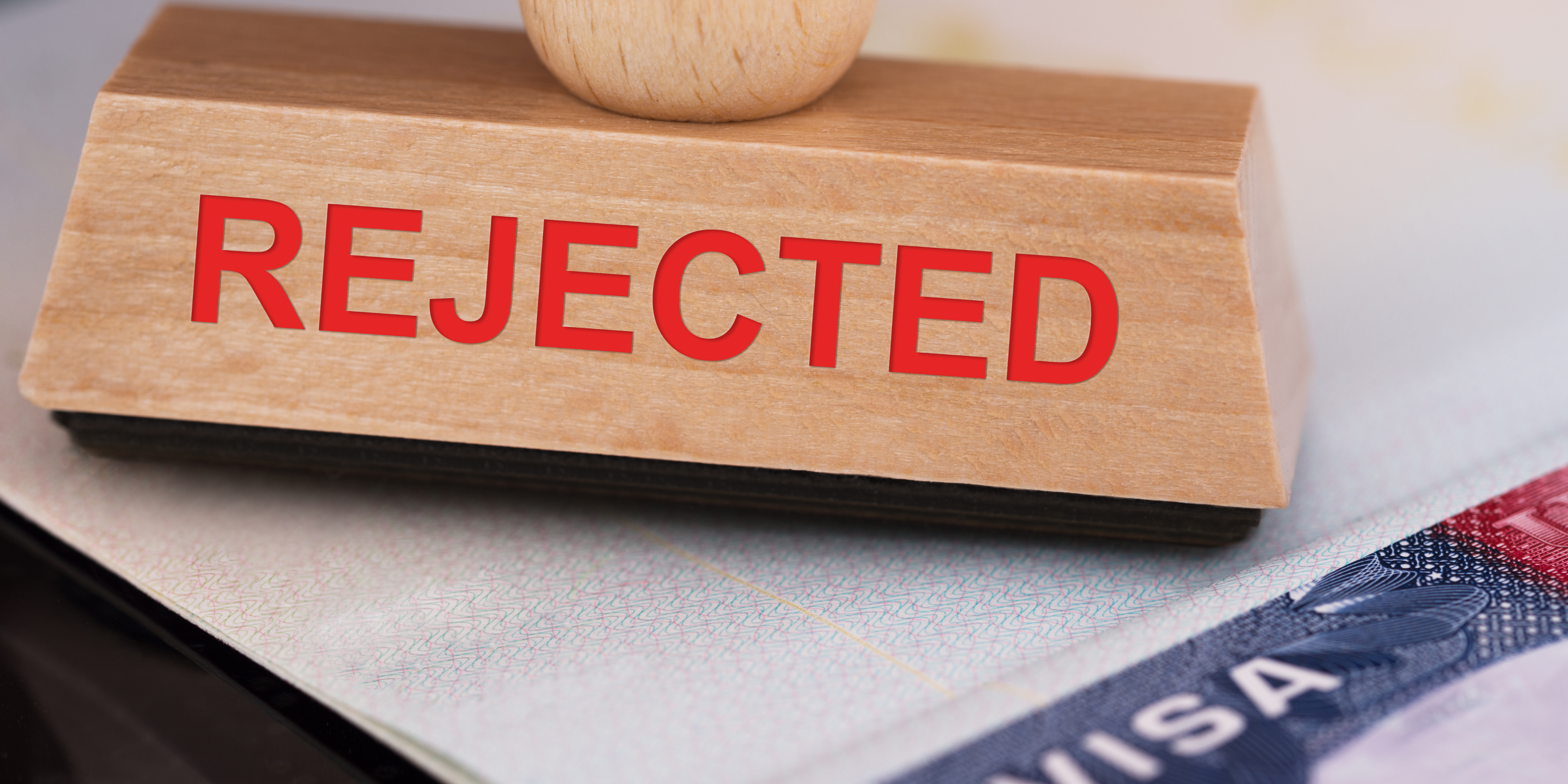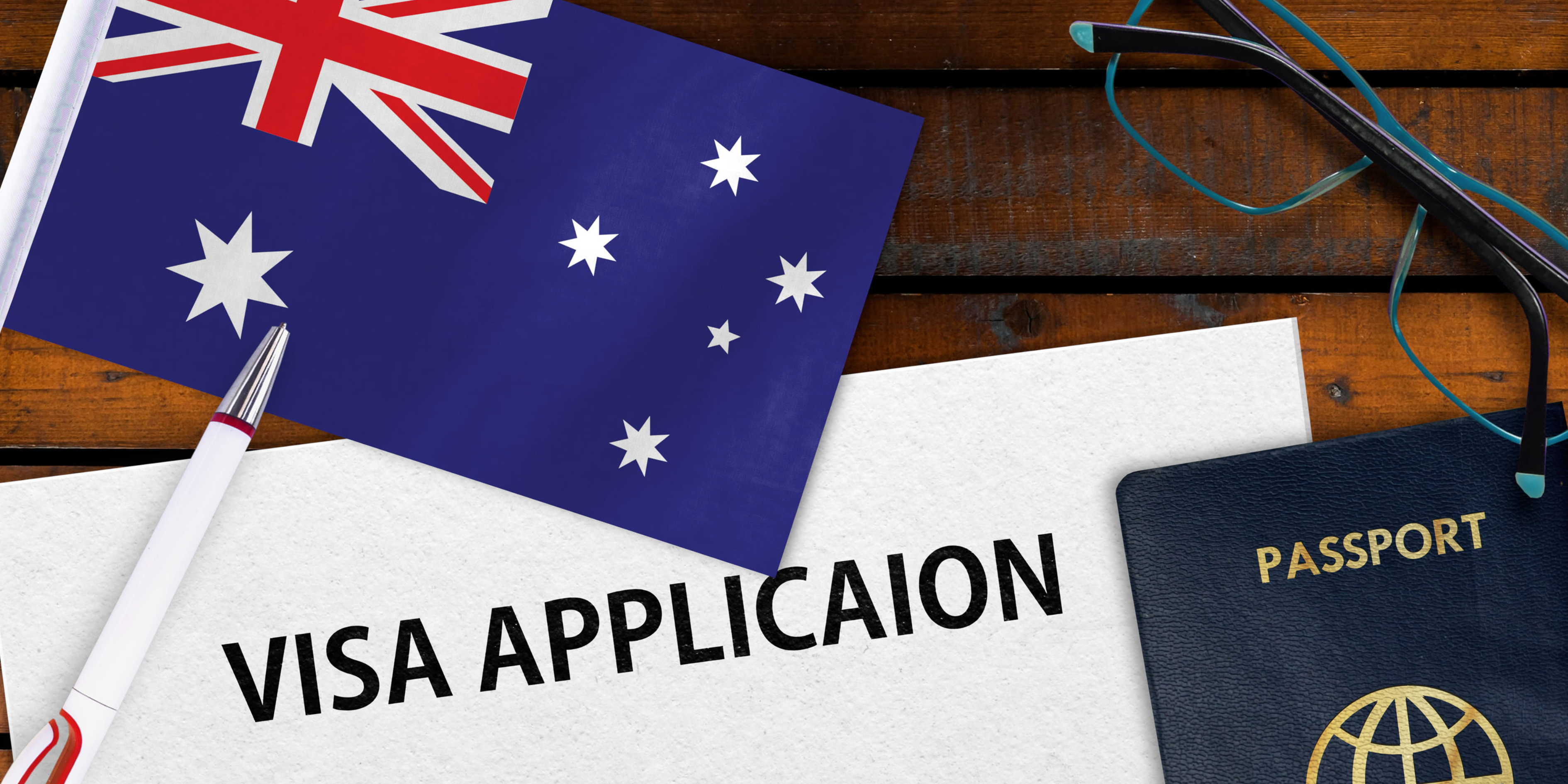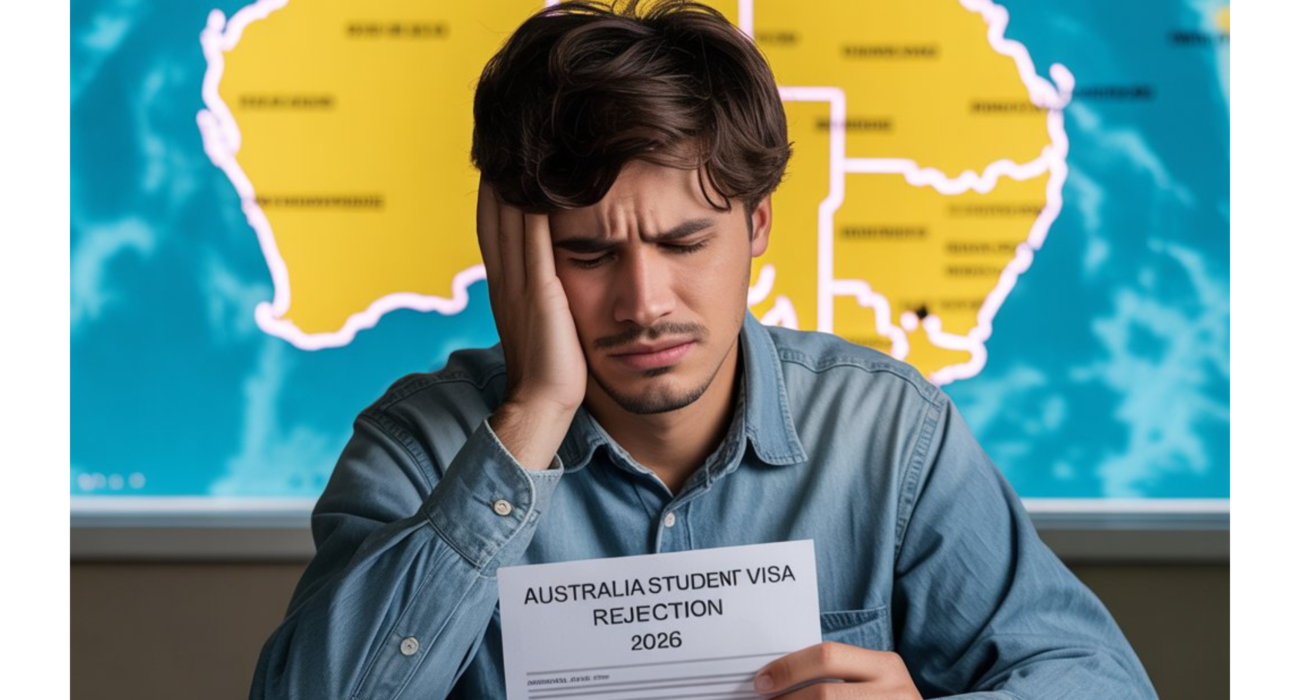Australia continues to be a top destination for international students, with enrolments reaching 713,145 by mid-2024. However, recent data indicates a concerning trend: student visa rejection rates have been on the rise.
In 2024, the Department of Home Affairs reported a nearly 30% decline in student visa grants to offshore applicants compared to the previous year .
This surge in refusals has led to a significant backlog in the Administrative Review Tribunal, with over 111,000 cases pending.
Australia Student Visa Rejection 2026 reasons and practical, document-level fixes you can apply right away.
Whether you’re applying from India, Nepal, Bangladesh, or elsewhere, understanding these factors can make a significant difference in your application’s success.
At Genius Study Abroad, we are committed to helping students navigate the complexities of the Australian student visa process.
Our expert guidance and support can significantly enhance your chances of a successful application.
Read More : Study in Australia 2026: Complete Guide for Indian Students
Australia Student Visa Rejection: Top 8 Reasons in 2026
Facing an Australia Student Visa Rejection can be stressful, but knowing the main causes helps students prepare better. Here are the top 8 reasons:
- Genuine Student / GTE issues – Inability to prove genuine temporary intentions.
- Insufficient or unclear funds – Short-held or fake financial documents are common red flags.
- Incomplete or expired documentation – Missing transcripts, passports, or visas often lead to denial.
- Health or character concerns – Prior visa cancellations or criminal records can impact approval.
- Course-background mismatch – Chosen courses not aligning with prior education or career plan.
- Weak SOP / GTE statement – Poorly written statements fail to convince the officer.
- Provider/integrity concerns – High-risk or unaccredited institutions may trigger rejections.
- Work/financial inconsistencies & agent fraud – Conflicting histories or third-party fraud raise doubts.
According to recent data, nearly 30% of student visa applications face rejection due to documentation or GTE issues. Preparing carefully with guidance from experts like Genius Study Abroad can significantly improve your chances of approval.
Read More : Australia Student Visa 2026: Latest Rules, Processing Time & Updates
Australia Student Visa Rejection 2026: Deep-Dive on Common Reasons & How to Fix Them

Getting an Australia Student Visa Rejection can be disheartening, especially after investing time and resources.
Understanding the exact reasons and preparing precise evidence can significantly improve your chances. Here’s a detailed guide to the main rejection grounds and how to address them effectively.
1. Genuine Student / GTE Weaknesses (150–200 words)
Visa officers primarily assess whether an applicant is a genuine student with temporary intentions to study in Australia. They evaluate:
- Your intent to return home after completing the course.
- Why you chose the specific course and provider.
- Your ties to your home country, such as family, property, or career prospects.
Common reasons for rejection:
- Vague career goals.
- Lack of evidence showing progression in your chosen field.
- Weak family or social ties back home.
How to fix:
- Provide a clear career narrative: explain your role progression, salary expectations, and how the course will help you achieve it.
- Evidence of family ties: property papers, family registration documents, or affidavits.
- Compare with similar courses at home to show why studying in Australia is essential.
Sample GTE checklist:
- Career goals with salary and role progression plan.
- Family, property, or social ties proof.
- Comparison of Australian course vs local alternatives.
2. Financial Evidence & “Genuine Funds” Problems (150–200 words)
Financial capability is a critical checkpoint. Officers often reject applications if they suspect non-genuine funds. Red flags include:
- Sudden large deposits in bank statements.
- Short-term holding of funds.
- Unexplained loans or mismatched declared living costs.
How to fix:
- Provide 6+ months of bank statements showing a consistent financial record.
- Include loan sanction letters, fixed deposit certificates, or sponsor affidavits.
- Attach proof of relationship and income tax returns if using family funds.
Checklist:
- Bank statements (6–12 months) with sufficient balance.
- Loan sanction or fixed deposit documents.
- Sponsor affidavit with relationship proof and tax returns.
3. Incomplete, Inconsistent, or Expired Documents (120–160 words)
One of the most common causes of instant Australia Student Visa Rejection is incomplete or inconsistent documentation. Errors can include:
- Expired passports or visas.
- Missing academic transcripts or English test scores.
- Mismatched personal details across documents.
How to fix:
- Use a final checklist to verify all documents before submission.
- Ensure certified translations for any non-English documents.
- Keep copies of course offers, OSHC, and valid passport ready.
Checklist:
- Passport with at least 6 months validity.
- Certified academic transcripts and English test results.
- OSHC proof and course offer letters.
Officers reject applications if even a single document is missing or inconsistent, so double-check everything with your agent or advisor.
4. Health & Character Requirements (80–120 words)
Applicants with health or character concerns are at higher risk of rejection. Key issues include:
- Prior criminal records or non-disclosure of offences.
- Expired immigration medical exams (IMEs).
- Failure to disclose previous visa issues or health conditions.
How to fix:
- Submit police clearance certificates from all relevant jurisdictions.
- Complete immigration medical exams through authorized panel doctors.
- Always disclose prior medical or character concerns honestly.
Checklist:
- Police clearance certificate (PCC).
- Immigration Medical Exam (IME) report.
- Honest disclosure of all health/character history.
5. Course Mismatch & Academic Profile (100–140 words)
A common rejection reason is when the chosen course does not align with your prior education or employment, or appears to be a poor fit. Officers may doubt your genuine intent to study.
How to fix:
- Provide explanations for bridge pathways or professional upskilling.
- Include employer letters to validate relevance of the course.
- Attach certificates showing prior qualifications are aligned with the course.
Checklist:
- Career or skill-gap explanation.
- Relevant employer letters or internship proof.
- Academic certificates matching course requirements.
6. Provider Integrity / Sector Policy Changes (90–120 words)
Australia’s immigration department has increased scrutiny on provider integrity. Applications linked to unaccredited providers, non-compliant campuses, or online-only courses often face rejection. Recent enforcement changes have led to a surge in appeals.
How to fix:
- Choose reputable and registered providers listed on CRICOS.
- Include course confirmation, mode of delivery, and campus location.
- Provide accommodation or support plans if offered by the provider.
Checklist:
- CRICOS registration verification.
- Course delivery and campus confirmation.
- Accommodation or welfare plan.
Checking provider integrity before application can save unnecessary delays or rejections.
7. Previous Visa Refusals or Onshore Issues (70–100 words)
Past refusals can affect credibility, especially if not addressed. Officers look for:
- Whether the applicant corrected prior errors.
- Clear acknowledgment of previous refusals.
- Evidence that original concerns have been resolved.
How to fix:
- Declare any past refusals.
- Attach refusal letters and provide factual explanations addressing original reasons.
- Submit new evidence proving compliance or eligibility.
Checklist:
- Past refusal letter.
- Corrective evidence.
- Brief explanation addressing previous concerns.
Avoiding Australia Student Visa Rejection in 2026 requires meticulous preparation, honest documentation, and a strong narrative of intent. Nearly 30–35% of rejections stem from GTE weaknesses and financial inconsistencies, highlighting the importance of guidance. Working with experienced consultants like Genius Study Abroad ensures your application is complete, genuine, and convincing, greatly increasing your chances of a successful visa outcome
Read More : Best IELTS Coaching in Delhi 2025 | Online & Offline Classes
Step-by-Step Checklist Before Applying for Your Australia Student Visa

Preparing carefully can prevent an Australia Student Visa Rejection. Use this 12-point printable checklist to ensure your application is complete and convincing:
12-Point Checklist:
- Valid Passport – Minimum 6 months validity.
- Course Offer Letter – Confirmed and signed by the provider.
- Statement of Purpose / GTE Draft – Clear career goals, reasons for studying in Australia.
- Academic Transcripts – Certified copies and translations if needed.
- English Test Scores – IELTS, TOEFL, or PTE as required.
- Bank Statements – At least 6 months of consistent funds.
- Loan Documents / Fixed Deposits – Sanction letters or certificates.
- Sponsor Affidavits & Proof of Relationship – If using family funds.
- OSHC (Overseas Student Health Cover) – Valid policy proof.
- Immigration Medical Exam (IME) – Completed with panel doctor.
- Police Clearance Certificates – For character assessment.
- Evidence of Ties to Home Country – Property, family, or employment letters.
Quick Red-Flag Scanner (Rework if any apply):
- Missing or inconsistent documents.
- Short-held or unexplained funds.
- Vague or generic GTE/SOP.
- Expired medical/English certificates.
- Unregistered provider or unclear course pathway.
- Previous refusals unaddressed.
Running through this checklist with guidance from Genius Study Abroad can help avoid costly mistakes and boost your chances of a successful visa outcome
If You Get Refused: Appeals, Reapply, or Alternative Pathways
Receiving an Australia Student Visa Rejection can be disheartening, but it’s not the end of the road. Understanding your options can help you make an informed decision and avoid repeating mistakes.
Appeal Options
Applicants can request a merit review through the Administrative Appeals Tribunal (AAT/ART). This involves a detailed review of the original decision, allowing submission of new evidence or clarifications. Recent trends show a surge in appeals, creating backlogs of 4–6 months or more, so timing is crucial.
When to Seek a Review vs Reapply
- Seek a review if the refusal was due to documentation errors, misinterpreted evidence, or minor GTE issues.
- Reapply if major gaps exist, such as insufficient funds, weak SOP, or course mismatch that can be fully corrected.
- Consider alternative pathways like student visas for other countries (Canada, UK, Germany) if eligibility criteria or financial requirements are better aligned.
With professional guidance from experts like Genius Study Abroad, you can navigate appeals, reapplications, or alternative options confidently, minimizing the risk of repeated Australia Student Visa Rejection.
Read More : Best Consultancy in India for Abroad Studies | Top Study Abroad Experts 2025
Real Application Examples & Mini-Case Studies
Understanding how real students overcame challenges can help avoid Australia Student Visa Rejection. Here are two anonymized examples:
Example A – Financial Evidence Issue
A student’s application was initially rejected due to insufficient and short-held funds. The refusal cited inconsistent bank statements and unclear loan documentation. With guidance from Genius Study Abroad, the student resubmitted:
- 6 months of consistent bank statements.
- Loan sanction letters and fixed deposit certificates.
- Sponsor affidavit with proof of relationship and tax returns.
Outcome: Visa approved within 4 weeks, demonstrating the importance of transparent financial evidence.
Example B – Weak GTE / SOP
Another applicant faced rejection due to a vague GTE statement and unclear career goals. The officer questioned the relevance of the chosen course to their background. The student then:
- Revised the SOP to clearly outline career progression.
- Added an employer letter showing relevance of the course to their current role.
- Highlighted family and professional ties in their home country.
Outcome: Application approved on re-submission. The officer acknowledged the strengthened narrative and supporting evidence.
Takeaway: Most Australia Student Visa Rejection cases can be addressed with clear documentation, genuine intent, and expert guidance from consultants like Genius Study Abroad, emphasizing transparency and alignment with career goals.
Read More : Top 5 Study Abroad Consultants in Delhi
Conclusion
Avoiding an Australia Student Visa Rejection in 2026 requires careful preparation, genuine documentation, and a clear career narrative. From financial proofs to a strong GTE statement, every detail matters. With the right guidance, you can significantly increase your chances of approval.
Book a document review consultation with experts at Genius Study Abroad to make your visa application smooth and successful.
Contact No : 70 335 335 70
FAQs
1. What is the most common reason for Australia student visa rejection?
GTE issues, insufficient financial evidence, and incomplete or inconsistent documents are the top causes.
2. Does a prior visa refusal mean I can’t ever apply?
No. You must declare past refusals, explain the circumstances, and provide new evidence to address previous concerns.
3. How long should funds be in the bank?
Preferably 3–6 months, with clear documentation showing the source of funds.
4. Should I use an agent?
Agents can help navigate the process, but ensure they are registered and avoid anyone promising guaranteed visas.
5. What documents are critical to avoid rejection?
Passport, course offer letter, certified academic transcripts, English test scores, OSHC, bank statements, and GTE/SOP are essential.
6. Can a weak SOP lead to rejection?
Yes, officers may reject if the Statement of Purpose or GTE doesn’t convincingly show your intent to study and return home.
7. How do prior health or character issues affect the application?
Undisclosed medical conditions or criminal records can lead to refusal. Always provide honest disclosures and required certificates.
8. Is the choice of provider important?
Absolutely. Choosing a reputable, CRICOS-registered provider reduces risk of rejection due to provider integrity issues.
9. Can I appeal a refusal?
Yes, through the Administrative Appeals Tribunal (AAT/ART), but timelines and backlogs mean careful planning is needed.
10. How can Genius Study Abroad help?
Experts guide you in preparing documents, drafting a strong GTE, and avoiding common pitfalls that lead to Australia Student Visa Rejection.



